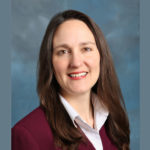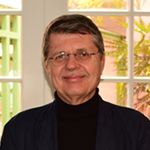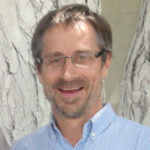Hungry Cities: The Global Revolution in Food Systems
-

January 23, 2017
8:30 am - 12:30 pmLa Jolla, CA, USA
We have an unprecedented global challenge – to feed a growing population and one that is increasingly living in urban areas. It’s estimated that by 2050, 66% of the world’s population will live in cities and much of this urban growth will take place in developing countries. Food systems are transforming to meet demand in geographically dispersed towns, small and medium cities, as well as in mega cities (> 10 million people) which numbered 10 in 1990, 28 in 2014, and may be 41 by 2030. Diets in poor, urban areas are changing as women enter the work force and seek out time and labor saving food options. A growing and affluent middle class in Asia, Latin America and Africa is also driving significant changes in preferred foods, with increasing consumption of perishable foods like meat, dairy and fresh fruit and vegetables.
These and other drivers of food choice in low and middle income countries were explored in the Agriculture & Food Systems Institute Scientific Session on January 23, 2017, with presentations from experts who shared their research and perspectives on how we may address this global revolution in food systems.
Speakers

Dr. Christine Blake
Associate Professor, Health Promotion, Education, and Behavior, Arnold School of Public HealthUniversity of South Carolina

Dr. Adam Drewnowski
Professor, Epidemiology, Director, Center for Public Health Nutrition, School of Public HealthUniversity of Washington

Dr. Jessica Fanzo
Bloomberg Distinguished Associate Professor, Ethics and Global Food & AgricultureJohns Hopkins University

Dr. Suneetha Kadiyala
Associate Professor in Nutrition-Sensitive Development, Faculty of Epidemiology and Population HealthLondon School of Hygiene & Tropical Medicine

Dr. Peter Richards
Economic Adviser, Global Engagement & Strategy Team, Bureau for Food SecurityU.S. Agency for International Development

Dr. David L. Tschirley
Professor, International Development, Agricultural, Food, and Resource EconomicsMichigan State University
Agenda
Click here to download the agenda in PDF format.
8:30 am
Welcome and Opening Remarks
Dr. Adam Drewnowski
University of Washington
8:45 am
Keynote: Urbanization, Food Systems and the Diet Transformation in Developing Countries: What do we know, and what do we need to know?
Dr. David Tschirley
Michigan State University
9:30 am
Understanding Drivers of Food Choice in Diverse and Dynamic Settings: Conceptual and Methodological Innovations
Dr. Christine Blake
University of South Carolina
10:00 am
Agriculture, Food Systems and Nutrition Linkages: Lessons Learned and Emerging Priorities
Dr. Suneetha Kadiyala
London School of Hygiene & Tropical Medicine
10:30 am
Break
11:00 am
Urbanization and USAID’s Value Chain Approach for Rural Economic Growth
Dr. Peter Richards
US Agency for International Development
11:30 am
Who Will Feed the World’s Cities? The Rural-Urban Convergence
Dr. Jessica Fanzo
John Hopkins University
12:00 pm
Panel Discussion
Dr. Adam Drewnowski (Moderator)
Dr. David Tschirley
Dr. Christine Blake
Dr. Suneetha Kadiyala
Dr. Peter Richards
Dr. Jessica Fanzo
12:30 pm
Adjourn
Abstracts
Keynote: Urbanization, Food Systems and the Diet Transformation in Developing Countries: What do we know, and what do we need to know?
Dr. David Tschirley, Michigan State University
Research over the past several years has begun to document a rapidly unfolding diet transformation across developing Africa and Asia, driven by income growth and urbanization. Beyond the broad patterns of this transformation, the most notable finding is that the transformation is not limited to middle class and higher households in urban areas – these patterns are seen in rural areas as well as urban, and among low income households as well as those higher in the income distribution. This finding suggests that enormous pressures of change are being felt now in agrifood systems as they attempt to respond to this rapidly rising and changing demand for food. The presentation will review what is known about the process of change, and what needs to be known in order for governments and donors to develop effective policy and programmatic responses to this diet transformation. The talk will focus especially on the “hidden middle” of the systems – the processing, logistics, and wholesaling operations that tend to be overlooked by both researchers and policy makers but whose performance is central to the effects of the transformation on local populations.
Understanding Drivers of Food Choice in Diverse and Dynamic Settings: Conceptual and Methodological Innovations
Dr. Christine Blake, University of South Carolina
Rapid changes in traditional dietary practices have led to increased consumption of industrially or locally processed foods. Attempts to achieve ambitious goals to improve dietary intake have led to identification of key challenges, including recognition of limited knowledge about drivers of food choice, particularly among the poor in low- and middle-income countries (LMIC). Food choice is the process whereby people select, prepare, and consume food. The Food Choice Process model of Furst, Bisogni, Sobal and colleagues has guided research on individuals’ food- and self-schemas as drivers of food choice that reflect cultural perspectives on what is considered edible and more or less desirable. Interpersonal factors drive decisions about food for the household, distribution among household members, and social settings for consumption. The Drivers of Food Choice (DFC) Competitive Grants program funded by the Gates Foundation and UK DFIC seeks to contribute to our understanding of the drivers of food choice in LMIC, many of which are experiencing rapid urbanization and changes to agriculture and markets. The program will fund up to 15 projects in LMIC pursuing a diverse set of questions about environmental and individual drivers of food choice using both established and innovative methods. Understanding the individual and interpersonal drivers of food choices under traditional conditions in LMIC and how these choices are affected by the rapid social and economic changes occurring in many parts of the world is important for program planners and policy makers.
Agriculture, Food Systems and Nutrition Linkages: Lessons Learned and Emerging Priorities
Dr. Suneetha Kadiyala, London School of Hygiene & Tropical Medicine
The commitment to strengthen the role of agriculture and food systems to optimize nutrition outcomes in low and middle income countries is evident in the Sustainable Development Goal 2 (SDG2). Many publications have noted the potential for agriculture-food systems to influence nutrition on a large scale, while acknowledging uncertainty about how best to fulfill that potential. This presentation will discuss the developments in our understanding-conceptual and empirical- of the interlinkages between agriculture-food systems and nutrition, the key gaps and conclude with some recommendations for policy and research.
Urbanization and USAID’s Value Chain Approach for Rural Economic Growth
Dr. Peter Richards, US Agency for International Development
In lower and middle income countries, family purchasing power has risen significantly over the past decade and a half. Population shifts, including rural to urban migration and the rapid rise of cities, have also reshaped market structures, particularly for agriculture and food. These changes are creating tremendous new opportunities (and challenges) for rural areas. The US government’s Feed the Future initiative, in recognition of these changes, emphasizes a market-driven, value chain approach to rural economic development. This includes not only working across the extent of the supply chain, but an increased emphasis on (1) developing farm level technical and financial capacities, particularly for high value dairy, meat, and horticultural production; (2) increasing awareness and recognition of product standards, to ensure safety and facilitate downstream processing; and (3) enabling efficient documentary and regulatory environments favorable to small and medium agri-food enterprises.
Who Will Feed the World’s Cities? The Rural-Urban Convergence
Dr. Jessica Fanzo, John Hopkins University
By 2050, 70% of the world’s population will be living in urban areas in search of employment and economic opportunities. Who will feed this exponentially growing population as rural societies begin to slowly disappear? Sixty percent of Africa remains rural and Asia, although rapidly shifting to an urbanized region, has approximately 50% who still live in rural areas. Rural development is an important part of the equation and investments in rural food systems are critical to sustainable development and feeding the world well. In many parts of the world, we are seeing encroachment of cities into peri-urban and rural communities with “ruralized” urban areas and “urbanized” rural landscapes. Although investments are cyclical and the urban-bias often dominates, there are important reasons to invest in rural development and support food hubs and food systems that harness this convergence. First, hunger and undernutrition dominates in rural areas (although also high in many urban slums), thus there is a need to invest in sound food security and nutrition strategies to tackle the burden to ensure that farmer families are healthy. Second, while urban agriculture holds some promise, rural landscapes still produce the majority of food around the world. Third, smallholder farmers have more diversified landscapes and produce approximately 60% of the world’s nutrients, making important contributions to the overall dietary diversity for the world’s population. Fourth, there are many successful examples of how, through better linkages with urban centers, rural development can feed these populated centers while jumpstarting entrepreneurship, empowering women, and sustaining rural livelihoods. This presentation will examine the diet and health consequences of urban migration and rural stagnation, and examples of how rural-urban cooperation can benefit health, economic and sustainable development of populations.
